The Detachment of Function and the Return to Essence: Exploring the Public’s Emotional Attitudes Towards Gamified Education
Abstract
1. Introduction
2. Research Design
2.1. Sentiment Recognition
2.2. LDA Topic Modeling
2.3. Research Platform Selection
2.4. Research Framework
3. Methodology
3.1. User Group and Sample Data
3.2. Tools Used
3.3. Program Details
3.3.1. Data Preprocessing
3.3.2. Comment Sentiment Analysis
3.3.3. Potential Topic Analysis
3.3.4. Theme Emotion
4. Research Results
4.1. Sentiment Analysis
4.1.1. Emotional Words and Keyword Analysis
4.1.2. Sentiment Score Analysis
4.1.3. Emotional Attitude Analysis
4.2. Potential Theme Analysis
4.3. Topic Sentiment Analysis
5. Discussion and Insights
5.1. Discussion Based on Topic Modeling and Sentiment Analysis
5.1.1. The Public’s Emotional Attitudes Toward Gamified Education Are Diverse
5.1.2. Separation of Gamification Education Function
5.1.3. Return to the Essence of Gamification Education
5.2. Research Contributions and Insights
- (1)
- It expands the explanatory framework of connectionism theory. Connectionism emphasizes the influence of proximity and integrative factors, and the functions embodied by gamified education may be shaped under this trend. On the one hand, gamified education tends to focus on intuitive and simple teaching tasks, such as language and programming education; on the other hand, it may lead the public to focus on the entertainment value brought by the game itself, resulting in a deviation from its functional purpose. Therefore, the development of gamified education should pay focus on a moderate balance between the tool carriers and the educational subjects. The gamified tools themselves must closely align with the educational goals, while avoiding deviations between the game content and the teaching tasks.
- (2)
- It proposes the dynamic influence of emotions and the learning process. The article points out that the state of emotions may have an impact on the learning process and outcomes. Positive emotions can enhance learners’ concentration, cognitive processing ability and self-efficacy, thereby strengthening learning motivation and efficiency. This helps learners to enhance the internalization of knowledge, build a knowledge system, and ultimately optimize learning outcomes. Negative emotions have a negative effect on learners’ cognitive and emotional states during the learning process, thereby affecting the learning outcome. These negative emotions can interfere with learners’ concentration and information processing ability, and reduce learning efficiency.
- (3)
- It has been clarified that the ultimate goal of gamified education is to return to the essence of education. Gamification serves as a bridge between thinking and learning, and its core theme has always been education. Gamified education has undergone multiple evolutions and integrations. It is not only about integrating game elements into learning, but also about innovating in educational concepts and teaching methods. Through gamified design, education is transformed into a more flexible, interactive and decentralized learning environment, enabling students to explore themselves and construct knowledge through active participation. In such an environment, not only can the mastery of subject knowledge be enhanced, but also deeper exploration and development can be achieved in terms of emotions and cognition. The advantages of gamification have been brought into play, ultimately achieving a return to the essence of education.
6. Conclusions
- (1)
- Optimize the balance between entertainment elements and deep learning to enhance learning motivation and effectiveness. Gamification design should be closely integrated with the depth of disciplinary knowledge (Oliveira et al., 2023) to ensure that entertainment elements do not distract learners from the academic depth. To solve the problem of students’ limited attention, the interactivity and interest of learning can be enhanced by reducing cognitive load (Yuldasheva, 2025) and optimizing multimedia resources and multi-level tasks (M. Lee, 2023), thereby strengthening students’ concentration and learning motivation. Meanwhile, combined with the immediate feedback and reflection mechanism (Christopoulos & Mystakidis, 2023), educators can help students deepen the learning content in the game by setting up additional assessment and reflection sections after task completion, ensuring that the entertainment elements do not weaken the depth of knowledge mastery.
- (2)
- Introduce an adaptive learning system to enhance the flexibility of gamified education. Although gamified education has broken the temporal and spatial limitations of traditional education, the overly fixed and standardized curriculum design has restricted the individualized needs of learners. Adaptive learning adjusts the teaching content and learning path in real time according to the individual characteristics of learners, such as learning progress, interests and comprehension ability (Sikora et al., 2024). Through artificial intelligence and data analysis technologies, the system can dynamically optimize the learning experience (Song et al., 2024), monitor the learning status and progress of learners in real time (Aly, 2024), and provide personalized course recommendations and feedback, thereby achieving more efficient learning and meeting their individualized needs.
- (3)
- Pay attention to the relationship between emotional factors and learning motivation. To further enhance learners’ sense of achievement, challenge and social identity, educators can strengthen emotion-driven learning design and emotional support in gamification (Mou et al., 2024). These emotional factors can be enhanced through means such as motivational feedback (Fong & Schallert, 2023) and mobile social interaction (Zhao & McClure, 2024). This can also be achieved by improving technical means.
Author Contributions
Funding
Institutional Review Board Statement
Informed Consent Statement
Data Availability Statement
Conflicts of Interest
References
- Abu-Hammad, R. M., & Hamtini, T. M. (2023). A gamification approach for making online education as effective as in-person education in learning programming concepts. International Journal of Emerging Technologies in Learning (iJET), 18(7), 28–49. [Google Scholar] [CrossRef]
- Alghazzawi, D. M., Alquraishee, A. G. A., Badri, S. K., & Hasan, S. H. (2023). ERF-XGB: Ensemble random forest-based XG boost for accurate prediction and classification of e-commerce product review. Sustainability, 15(9), 7076. [Google Scholar] [CrossRef]
- Aly, M. (2024). Revolutionizing online education: Advanced facial expression recognition for real-time student progress tracking via deep learning model. Multimedia Tools and Applications, 84, 12575–12614. [Google Scholar] [CrossRef]
- Asikainen, H., & Katajavuori, N. (2023). Exhausting and difficult or easy: The association between psychological flexibility and study related burnout and experiences of studying during the pandemic. Frontiers in Education, 8, 1215549. [Google Scholar] [CrossRef]
- Barragán-Pulido, S., Barragán-Pulido, M. L., Alonso-Hernández, J. B., Castro-Sánchez, J. J., & Rabazo-Méndez, M. J. (2023). Development of students’ skills through gamification and serious games: An exploratory study. Applied Sciences, 13(9), 5495. [Google Scholar] [CrossRef]
- Bennani, S., Maalel, A., & Ben Ghezala, H. (2022). Adaptive gamification in E-learning: A literature review and future challenges. Computer Applications in Engineering Education, 30(2), 628–642. [Google Scholar] [CrossRef]
- Blythe, E., Garrido, L., & Longo, M. R. (2023). Emotion is perceived accurately from isolated body parts, especially hands. Cognition, 230, 105260. [Google Scholar] [CrossRef]
- Chang, C., Jen, H., & Yang, J. C. (2024). Integrating scenario game-based learning with the experiential learning strategy to facilitate nursing students’ learning performance and core competencies in labor support training. Interactive Learning Environments, 32(10), 7170–7185. [Google Scholar] [CrossRef]
- Chen, C., & Huang, K. (2024). The interplay of rewards and competition in digital game-based learning: Effects on intrinsic motivation, game performance and behaviors, and computational thinking. Learning and Instruction, 94, 101995. [Google Scholar] [CrossRef]
- Chow, K., & Mercado, E., III. (2020). Performance anxiety and the plasticity of emotional responses. Cognition and Emotion, 34(7), 1309–1325. [Google Scholar] [CrossRef]
- Christopoulos, A., & Mystakidis, S. (2023). Gamification in education. Encyclopedia, 3(4), 1223–1243. [Google Scholar] [CrossRef]
- Chuang, J., Manning, C., & Heer, J. (2012, May 21–25). Termite: Visualization techniques for assessing textual topic models. International Working Conference on Advanced Visual Interfaces, Capri Island, Italy. [Google Scholar]
- Dah, J., Hussin, N., Zaini, M. K., Isaac Helda, L., Senanu Ametefe, D., & Adozuka Aliu, A. (2024). Gamification is not Working: Why? Games and Culture, 742020771. [Google Scholar] [CrossRef]
- Damaševičius, R., Maskeliūnas, R., & Blažauskas, T. (2023). Serious games and gamification in healthcare: A meta-review. Information, 14(2), 105. [Google Scholar] [CrossRef]
- Danyal, M., Khan, S., Khan, M., Ghaffar, M., Khan, B., & Arshad, M. (2023). Sentiment analysis based on performance of linear support vector machine and multinomial naïve bayes using movie reviews with baseline techniques. Journal on Big Data, 5, 1–18. [Google Scholar] [CrossRef]
- Deacon, B., Laufer, M., & Schäfer, L. O. (2023). Infusing educational technologies in the heart of the university—A systematic literature review from an organisational perspective. British Journal of Educational Technology, 54(2), 441–466. [Google Scholar] [CrossRef]
- Demirbilek, M., Talan, T., & Alzouebi, K. (2022). An examination of the factors and challenges to adopting gamification in English foreign language teaching. International Journal of Technology in Education, 5(4), 654–668. [Google Scholar] [CrossRef]
- Deterding, S., Dixon, D., Khaled, R., & Nacke, L. (2011, September 28–30). From game design elements to gamefulness: Defining “gamification”. 5th International Academic MindTrek Conference: Envisioning Future Media Environments, Tampere, Finland. [Google Scholar]
- Downes, S. (2022). Connectivism. Asian Journal of Distance Education, 17(1). [Google Scholar]
- Duan, J., Lu, L., & Xie, K. (2023). Examining knowledge construction in three social interactive learning environments: A comparison of knowledge networks, social networks, and social knowledge networks. Interactive Learning Environments, 31(6), 3914–3938. [Google Scholar] [CrossRef]
- Durga, P., & Godavarthi, D. (2023). Deep-sentiment: An effective deep sentiment analysis using a decision-based recurrent neural network (D-RNN). IEEE Access, 11, 108433–108447. [Google Scholar] [CrossRef]
- Dziubaniuk, O., Ivanova-Gongne, M., & Nyholm, M. (2023). Learning and teaching sustainable business in the digital era: A connectivism theory approach. International Journal of Educational Technology in Higher Education, 20(1), 20. [Google Scholar] [CrossRef]
- Fong, C. J., & Schallert, D. L. (2023). “Feedback to the future”: Advancing motivational and emotional perspectives in feedback research. Educational Psychologist, 58(3), 146–161. [Google Scholar] [CrossRef]
- Gejandran, N. P., & Abdullah, N. (2024). Gamification in e-learning: A systematic review of benefits, challenges, and future possibilities. Journal of Logistics, Informatics and Service Science, 11(2), 84–104. [Google Scholar]
- Gelles, L. A., Lord, S. M., Hoople, G. D., Chen, D. A., & Mejia, J. A. (2020). Compassionate flexibility and self-discipline: Student adaptation to emergency remote teaching in an integrated engineering energy course during COVID-19. Education Sciences, 10(11), 304. [Google Scholar] [CrossRef]
- Gupta, S., Kumar, P., & Tekchandani, R. K. (2023). Facial emotion recognition based real-time learner engagement detection system in online learning context using deep learning models. Multimedia Tools and Applications, 82(8), 11365–11394. [Google Scholar] [CrossRef]
- Hadi Mogavi, R., Guo, B., Zhang, Y., Haq, E., Hui, P., & Ma, X. (2022, June 1–3). When gamification spoils your learning: A qualitative case study of gamification misuse in a language-learning app. Ninth ACM Conference on Learning@ Scale, New York, NY, USA. [Google Scholar]
- Haller, M., & Ast, A. (2024). Augmented reality an der schnittstelle von hochschuldidaktik und technologie: Integration von realen objekten für medialgestütztes lernen. DELFI. [Google Scholar] [CrossRef]
- Hamsa, S., Shahin, I., Iraqi, Y., Damiani, E., Nassif, A. B., & Werghi, N. (2023). Speaker identification from emotional and noisy speech using learned voice segregation and speech VGG. Expert Systems with Applications, 224, 119871. [Google Scholar] [CrossRef]
- Hanson, S. J., & Burr, D. J. (1990). What connectionist models learn: Learning and representation in connectionist networks. Behavioral and Brain Sciences, 13(3), 471–489. [Google Scholar] [CrossRef]
- Huseinović, L. (2024). The effects of gamification on student motivation and achievement in learning English as a foreign language in higher education. Map Education and Humanities, 4, 10–36. [Google Scholar] [CrossRef]
- Hussein, E., Kan An, A., Rasheed, A., Alrashed, Y., Jdaitawi, M., Abas, A., Mabrouk, S., & Abdelmoneim, M. (2023). Exploring the impact of gamification on skill development in special education: A systematic review. Contemporary Educational Technology, 15(3), ep443. [Google Scholar] [CrossRef]
- Johnson, J. (2024). Effect of emotions on learning, memory, and disorders associated with the changes in expression levels: A narrative review. Brain Circulation, 10(2), 134–144. [Google Scholar] [CrossRef]
- Kalogiannakis, M., Papadakis, S., & Zourmpakis, A. (2021). Gamification in science education. A systematic review of the literature. Education Sciences, 11(1), 22. [Google Scholar] [CrossRef]
- Khaldi, A., Bouzidi, R., & Nader, F. (2023). Gamification of e-learning in higher education: A systematic literature review. Smart Learning Environments, 10(1), 10. [Google Scholar] [CrossRef] [PubMed]
- Koskinen, A., McMullen, J., Ninaus, M., & Kiili, K. (2023). Does the emotional design of scaffolds enhance learning and motivational outcomes in game-based learning? Journal of Computer Assisted Learning, 39(1), 77–93. [Google Scholar] [CrossRef]
- Kukreja, V. (2023). Recent trends in mathematical expressions recognition: An LDA-based analysis. Expert Systems with Applications, 213, 119028. [Google Scholar]
- Kukreja, V. (2024). Comic exploration and insights: Recent trends in LDA-Based recognition studies. Expert Systems with Applications, 255, 124732. [Google Scholar]
- Lampropoulos, G., Keramopoulos, E., Diamantaras, K., & Evangelidis, G. (2022). Augmented reality and gamification in education: A systematic literature review of research, applications, and empirical studies. Applied Sciences, 12(13), 6809. [Google Scholar] [CrossRef]
- Lampropoulos, G., & Sidiropoulos, A. (2024). Impact of gamification on students’ learning outcomes and academic performance: A longitudinal study comparing online, traditional, and gamified learning. Education Sciences, 14(4), 367. [Google Scholar] [CrossRef]
- Lee, J., Ng, K., & Yoong, Y. (2023). Face and facial expressions recognition system for blind people using ResNet50 architecture and CNN. Journal of Informatics and Web Engineering, 2(2), 284–298. [Google Scholar] [CrossRef]
- Lee, M. (2023). Multi-task deep learning games: Investigating nash equilibria and convergence properties. Axioms, 12(6), 569. [Google Scholar] [CrossRef]
- Loijas, J. (2024). How gamification shapes learning and interaction in virtual educational events: Insights from Finnish event industry professionals [Master’s thesis, Tampere University]. [Google Scholar]
- Lou, J., & Xu, Q. (2022). The development of positive education combined with online learning: Based on theories and practices. Frontiers in Psychology, 13, 952784. [Google Scholar] [CrossRef]
- Machmud, M. T., Wattanachai, S., & Samat, C. (2023). Constructivist gamification environment model designing framework to improve ill-structured problem solving in learning sciences. Educational Technology Research and Development, 71(6), 2413–2429. [Google Scholar] [CrossRef]
- Mahadevaswamy, U. B., & Swathi, P. (2023). Sentiment analysis using bidirectional LSTM network. Procedia Computer Science, 218, 45–56. [Google Scholar] [CrossRef]
- Mee, R. W. M., Pek, L. S., Von, W. Y., Ghani, K. A., Shahdan, T. S. T., Ismail, M. R., & Rao, Y. S. (2021). A conceptual model of analogue gamification to enhance learners’ motivation and attitude. International Journal of Language Education, 5(2), 40–50. [Google Scholar] [CrossRef]
- Mewada, A., & Dewang, R. K. (2023). SA-ASBA: A hybrid model for aspect-based sentiment analysis using synthetic attention in pre-trained language BERT model with extreme gradient boosting. The Journal of Supercomputing, 79(5), 5516–5551. [Google Scholar] [CrossRef]
- Mohamed, N. H., Beckstein, A., Winship, G., Ashraf Khan Mou, T., Pang, N. T. P., & Relojo-Howell, D. (2023). Effects of self-expressive writing as a therapeutic method to relieve stress among university students. Journal of Poetry Therapy, 36(3), 243–255. [Google Scholar] [CrossRef]
- Mohd, C. K., Nuraini, C. K., Mohamad, S. N. M., Sulaiman, H., Shahbodin, F., & Rahim, N. (2023). A review of gamification tools to boost students’ motivation and engagement. Journal of Theoretical and Applied Information Technology, 101(7), 2771–2782. [Google Scholar]
- Mou, Y., Ma, Y., Guo, D., & Ding, Z. (2024). Effect of platform gamification rewards on user stickiness. Management Decision, 63(3), 824–849. [Google Scholar] [CrossRef]
- Murillo-Zamorano, L. R., López-Sánchez, J. Á., López-Rey, M. J., & Bueno-Muñoz, C. (2023). Gamification in higher education: The ECOn+ star battles. Computers & Education, 194, 104699. [Google Scholar]
- Nandwani, P., & Verma, R. (2021). A review on sentiment analysis and emotion detection from text. Social Network Analysis and Mining, 11(1), 81. [Google Scholar] [CrossRef]
- Nieto-Escamez, F. A., & Roldán-Tapia, M. D. (2021). Gamification as online teaching strategy during COVID-19: A mini-review. Frontiers in Psychology, 12, 648552. [Google Scholar] [CrossRef]
- Oliveira, W., Hamari, J., Shi, L., Toda, A. M., Rodrigues, L., Palomino, P. T., & Isotani, S. (2023). Tailored gamification in education: A literature review and future agenda. Education and Information Technologies, 28(1), 373–406. [Google Scholar] [CrossRef]
- Ourdas, C., & Ponis, S. (2023). Evaluating the effects of gamification in behavioural change: A proposed SEM-based approach. Sustainability, 15(6), 5442. [Google Scholar] [CrossRef]
- Pasqualotto, A., Parong, J., Green, C. S., & Bavelier, D. (2023). Video game design for learning to learn. International Journal of Human–Computer Interaction, 39(11), 2211–2228. [Google Scholar] [CrossRef]
- Perez-Aranda, J., Medina-Claros, S., & Urrestarazu-Capellán, R. (2024). Effects of a collaborative and gamified online learning methodology on class and test emotions. Education and Information Technologies, 29(2), 1823–1855. [Google Scholar] [CrossRef]
- Phung, Q. D. (2020). The negative effect of gamification in E-learning in the eyes of university students. Available online: https://www.diva-portal.org/smash/record.jsf?pid=diva2%3A1463534&dswid=4168 (accessed on 23 May 2025).
- Rahardja, U., Ngadi, M. A., Budiarto, R., Aini, Q., Hardini, M., & Oganda, F. P. (2021). Education exchange storage protocol: Transformation into decentralized learning platform. Frontiers in Education, 6, 782969. [Google Scholar] [CrossRef]
- Ramos Aguiar, L. R., Álvarez Rodríguez, F. J., Madero Aguilar, J. R., Navarro Plascencia, V., Peña Mendoza, L. M., Quintero Valdez, J. R., Vázquez Pech, J. R., Mendieta Leon, A., & Lazcano Ortiz, L. E. (2023). Implementing gamification for blind and autistic people with tangible interfaces, extended reality, and universal design for learning: Two case studies. Applied Sciences, 13(5), 3159. [Google Scholar] [CrossRef]
- Ratinho, E., & Martins, C. (2023). The role of gamified learning strategies in student’s motivation in high school and higher education: A systematic review. Heliyon, 9(8), e19033. [Google Scholar] [CrossRef]
- Rodrigues, L., Palomino, P. T., Toda, A. M., Klock, A. C., Oliveira, W., Avila-Santos, A. P., Gasparini, I., & Isotani, S. (2021). Personalization improves gamification: Evidence from a mixed-methods study. Proceedings of the ACM on Human-Computer Interaction, 5(CHI PLAY), 1–25. [Google Scholar] [CrossRef]
- Saura, J. R., Ribeiro-Soriano, D., & Saldaña, P. Z. (2022). Exploring the challenges of remote work on Twitter users’ sentiments: From digital technology development to a post-pandemic era. Journal of Business Research, 142, 242–254. [Google Scholar] [CrossRef]
- Sharma, W., Lim, W. M., Kumar, S., Verma, A., & Kumra, R. (2024). Game on! A state-of-the-art overview of doing business with gamification. Technological Forecasting and Social Change, 198, 122988. [Google Scholar] [CrossRef]
- Shobayo, O., Adeyemi-Longe, S., Popoola, O., & Ogunleye, B. (2024). Innovative sentiment analysis and prediction of stock price using FinBERT, GPT-4 and logistic regression: A data-driven approach. Big Data and Cognitive Computing, 8(11), 143. [Google Scholar] [CrossRef]
- Sievert, C., & Shirley, K. E. (2014, June 27). LDAvis: A method for visualizing and interpreting topics. Workshop on Interactive Language Learning, Visualization, and Interfaces, Baltimore, MD, USA. [Google Scholar]
- Sikora, Y., Chernykh, V., Shaforost, Y., Danylyuk, S., & Chemerys, I. (2024). Leveraging gamification and game-based technologies for educational purposes. Multidisciplinary Reviews, 7, 2024spe008. [Google Scholar] [CrossRef]
- Sofiadin, A. (2021). Security and ethics in sustainable e-learning and gamification framework for higher education. Iadis International Journal on Www/Internet, 19(1), 85–100. [Google Scholar]
- Song, C., Shin, S., & Shin, K. (2024). Implementing the dynamic feedback-driven learning optimization framework: A machine learning approach to personalize educational pathways. Applied Sciences, 14(2), 916. [Google Scholar] [CrossRef]
- Tan, K. L., Lee, C. P., & Lim, K. M. (2023). A survey of sentiment analysis: Approaches, datasets, and future research. Applied Sciences, 13(7), 4550. [Google Scholar] [CrossRef]
- Tan, K. L., Loganathan, S. R., Pidani, R. R., Yeap, P., Ng, D. W. L., Chong, N. T. S., Liow, M. L. S., Cheong, K. C., & Yeo, M. M. L. (2024). Embracing imperfections: A predictive analysis of factors alleviating adult learners’ digital learning stress on Singapore’s lifelong learning journey. Human Resource Development International, 28, 371–392. [Google Scholar] [CrossRef]
- Tomé Klock, A. C., Palomino, P. T., Rodrigues, L. A. L., Toda, A. M., Simanke, S., Spors, V., Santana, B. S., & Hamari, J. (2024). Gamification towards and alongside equity, diversity and inclusion: Looking back to move forward. New Media & Society, 1677860492. [Google Scholar] [CrossRef]
- Urhan, C. (2024). Enhancing semantic understanding by bridging topic modeling and thematic analysis: An empirical study on self-help twitter corpus and in-depth interviews digital humanities looking at the world: Exploring innovative approaches and contributions to society (pp. 53–71). Springer. [Google Scholar]
- Uz Bilgin, C., & Gul, A. (2020). Investigating the effectiveness of gamification on group cohesion, attitude, and academic achievement in collaborative learning environments. Techtrends, 64(1), 124–136. [Google Scholar] [CrossRef]
- Wang, Y., Xin, Y., & Chen, L. (2024). Navigating the emotional landscape: Insights into resilience, engagement, and burnout among Chinese High School English as a Foreign Language Learners. Learning and Motivation, 86, 101978. [Google Scholar] [CrossRef]
- Yang, Y., Yu, A., Li, J., Shafi, M., & Fauzi, M. A. (2024). Exploring the impact of gamified elements on college students’ learning in virtual learning communities. Kybernetes. [Google Scholar] [CrossRef]
- Yu, D., & Xiang, B. (2023). Discovering topics and trends in the field of Artificial Intelligence: Using LDA topic modeling. Expert Systems with Applications, 225, 120114. [Google Scholar] [CrossRef]
- Yuldasheva, L. L. (2025). Understanding the causes of students’academic disengagement and strategies for improvement. Ta’lim Innovatsiyasi Va Integratsiyasi, 40(1), 226–235. [Google Scholar]
- Zhan, Z., Li, T., & Ye, Y. (2024). Effect of jigsaw-integrated task-driven learning on students’ motivation, computational thinking, collaborative skills, and programming performance in a high-school programming course. Computer Applications in Engineering Education, 32(6), e22793. [Google Scholar] [CrossRef]
- Zhang, Z., & Huang, X. (2024). Exploring the impact of the adaptive gamified assessment on learners in blended learning. Education and Information Technologies, 29(16), 21869–21889. [Google Scholar] [CrossRef]
- Zhao, X., & McClure, C. D. (2024). Gather. Town: A gamification tool to promote engagement and establish online learning communities for language learners. RELC Journal, 55(1), 240–245. [Google Scholar] [CrossRef]
- Zourmpakis, A., Kalogiannakis, M., & Papadakis, S. (2023). Adaptive gamification in science education: An analysis of the impact of implementation and adapted game elements on students’ motivation. Computers, 12(7), 143. [Google Scholar] [CrossRef]
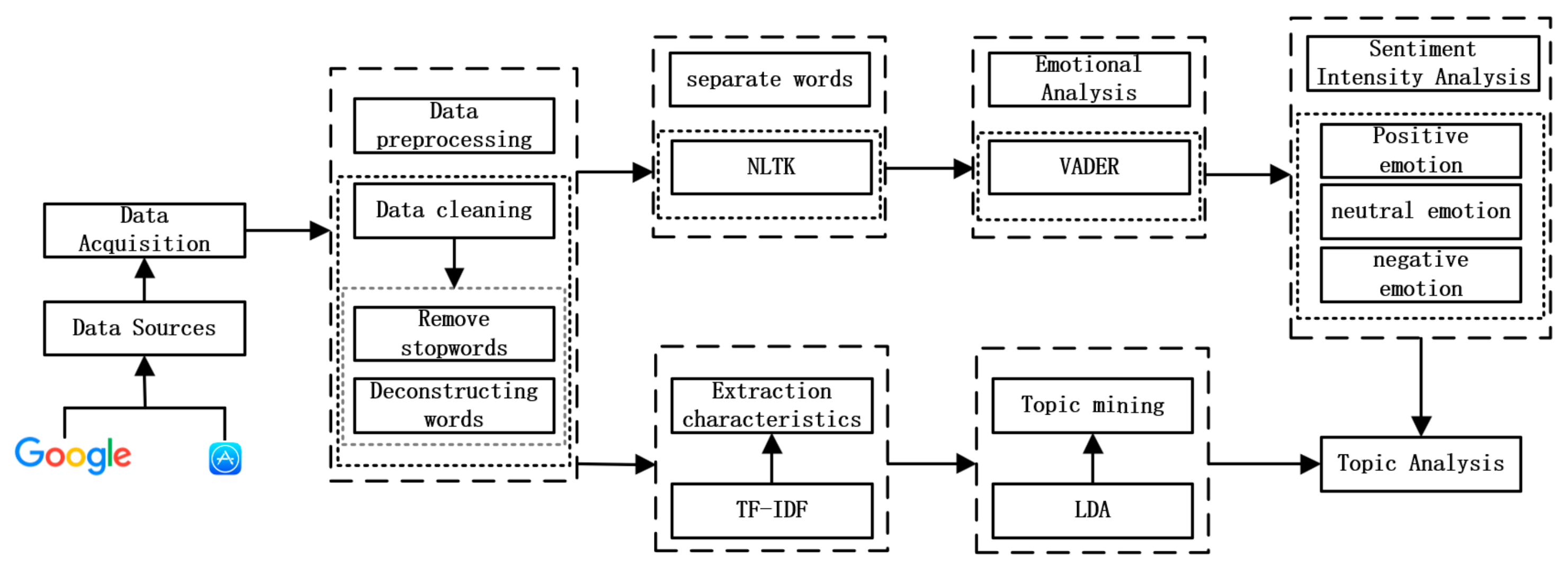



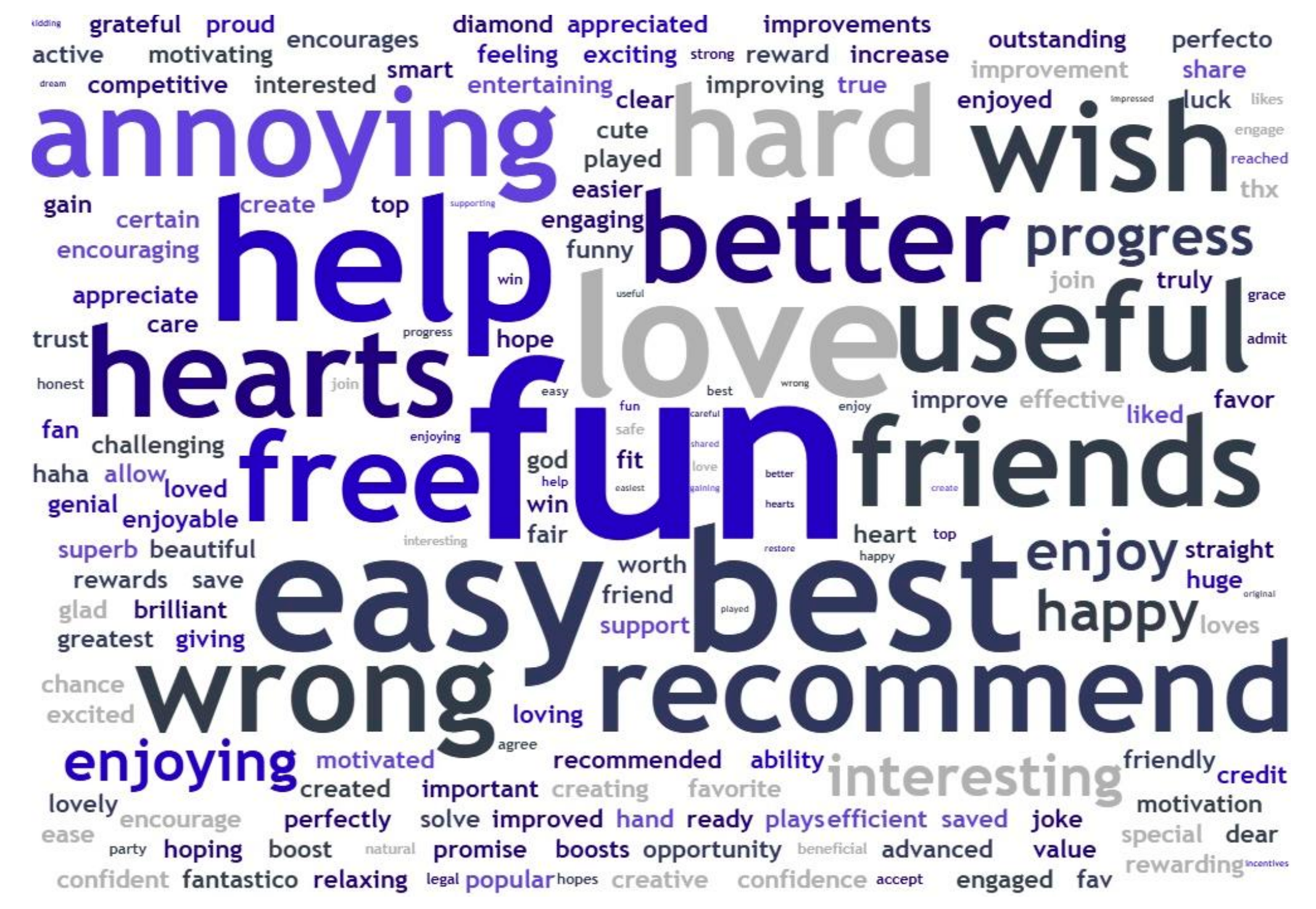
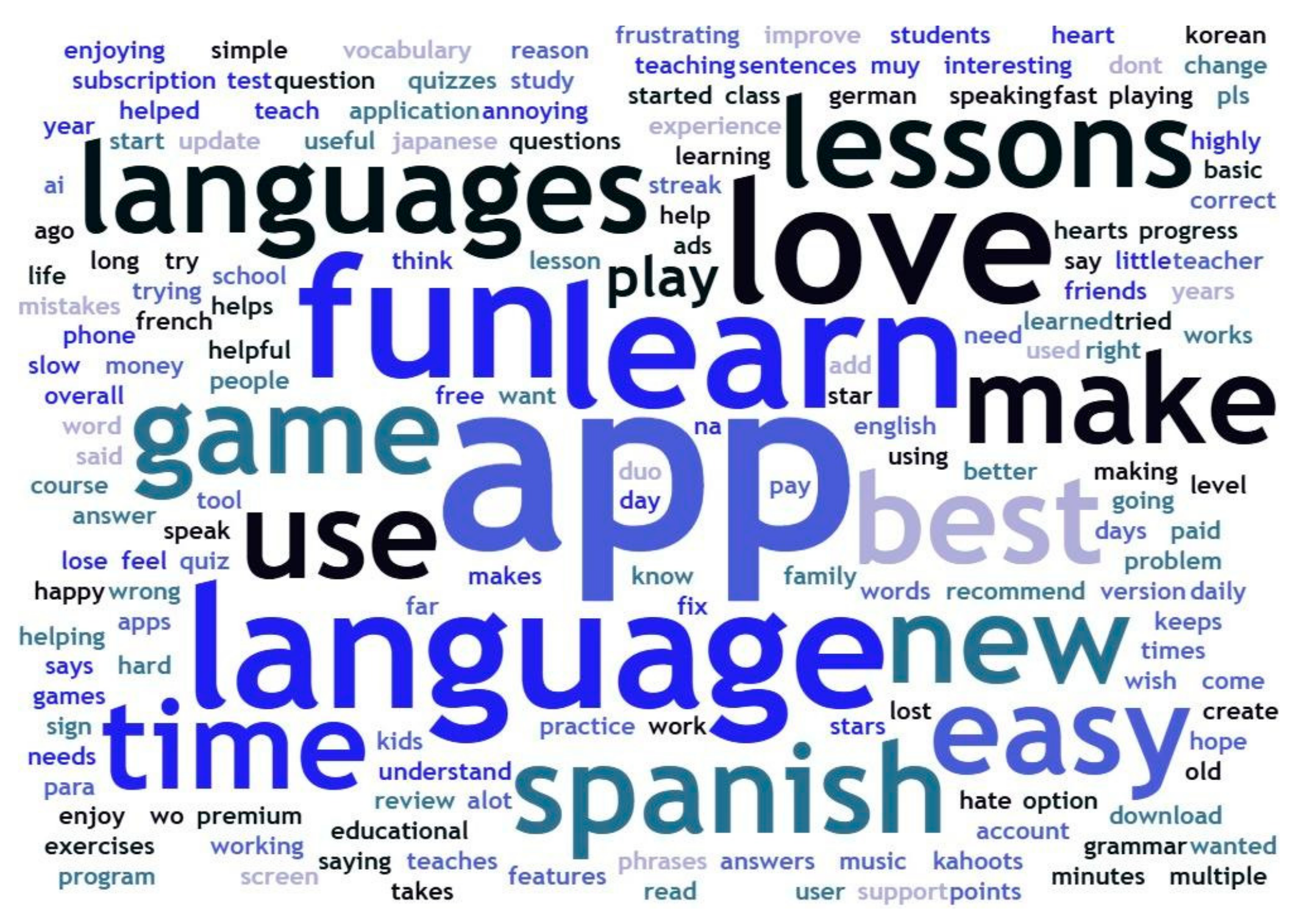

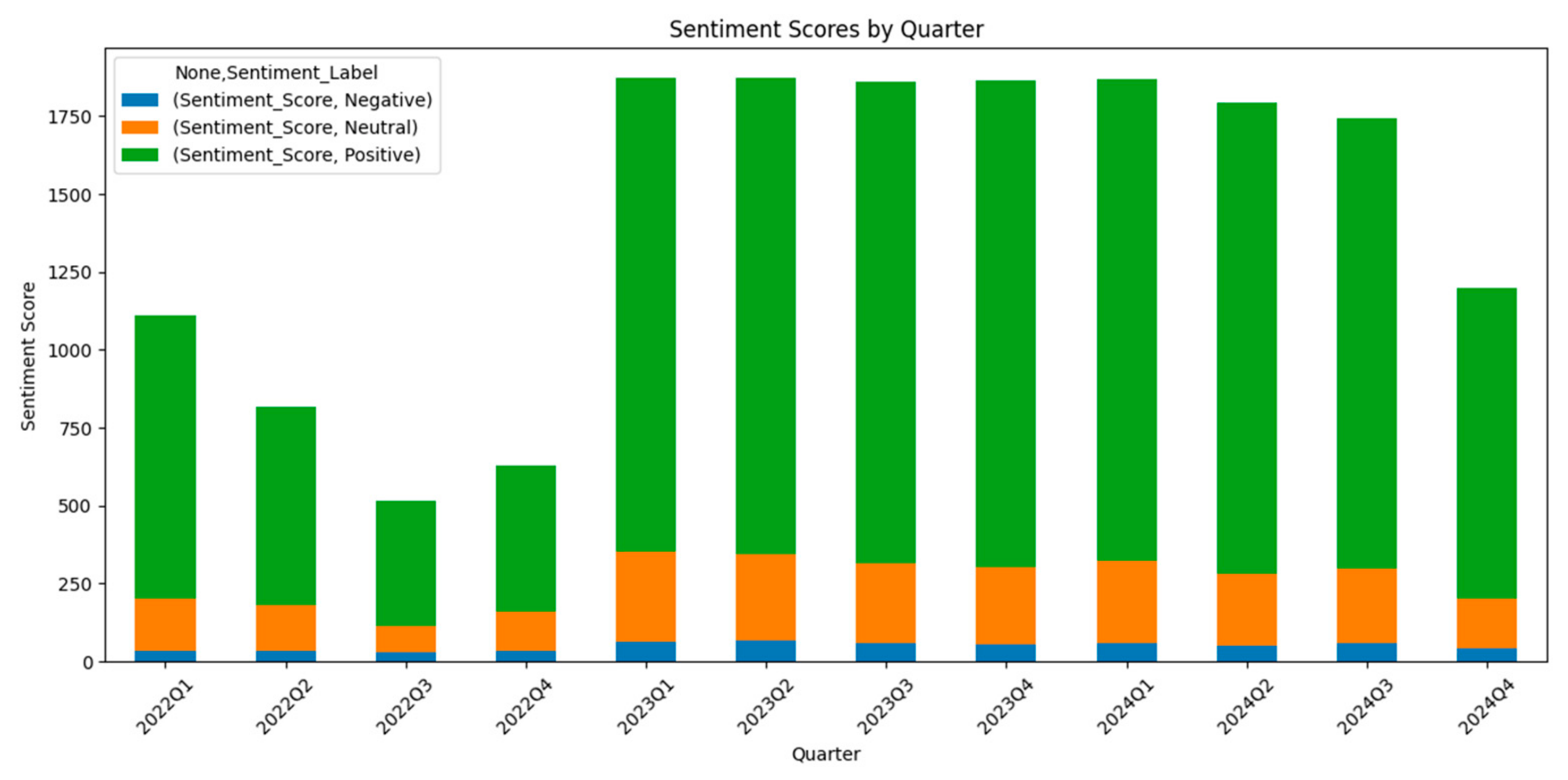
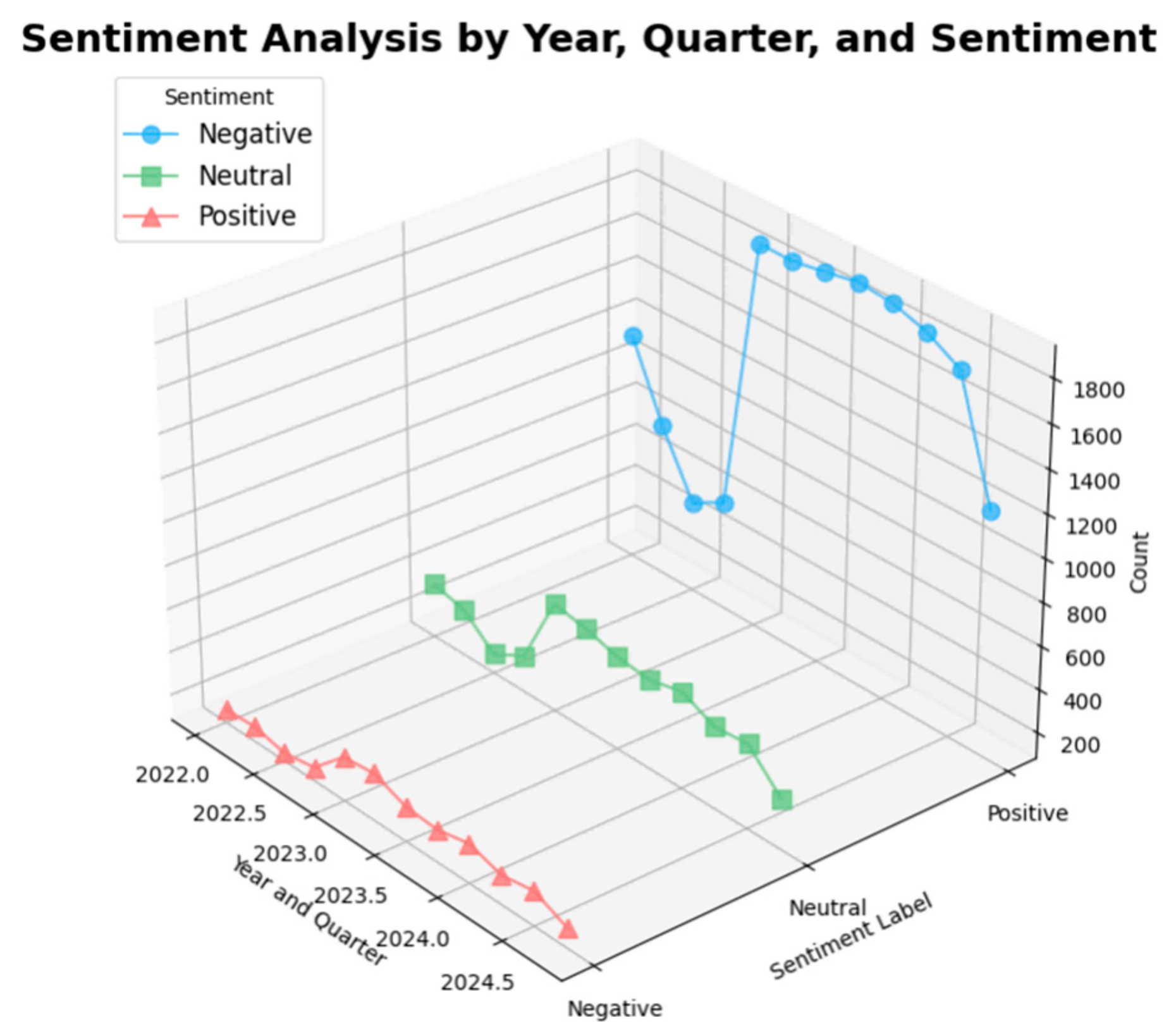

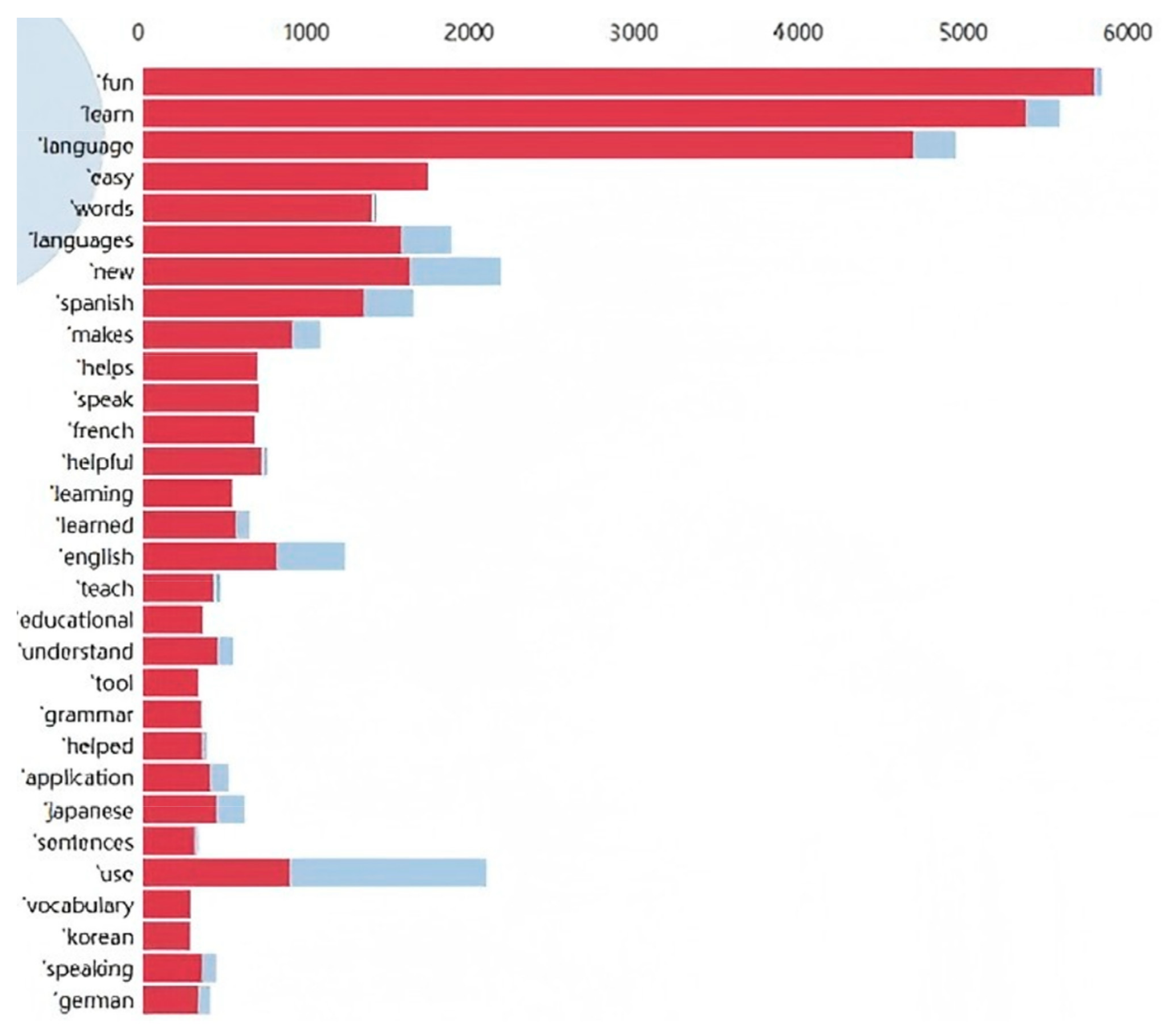
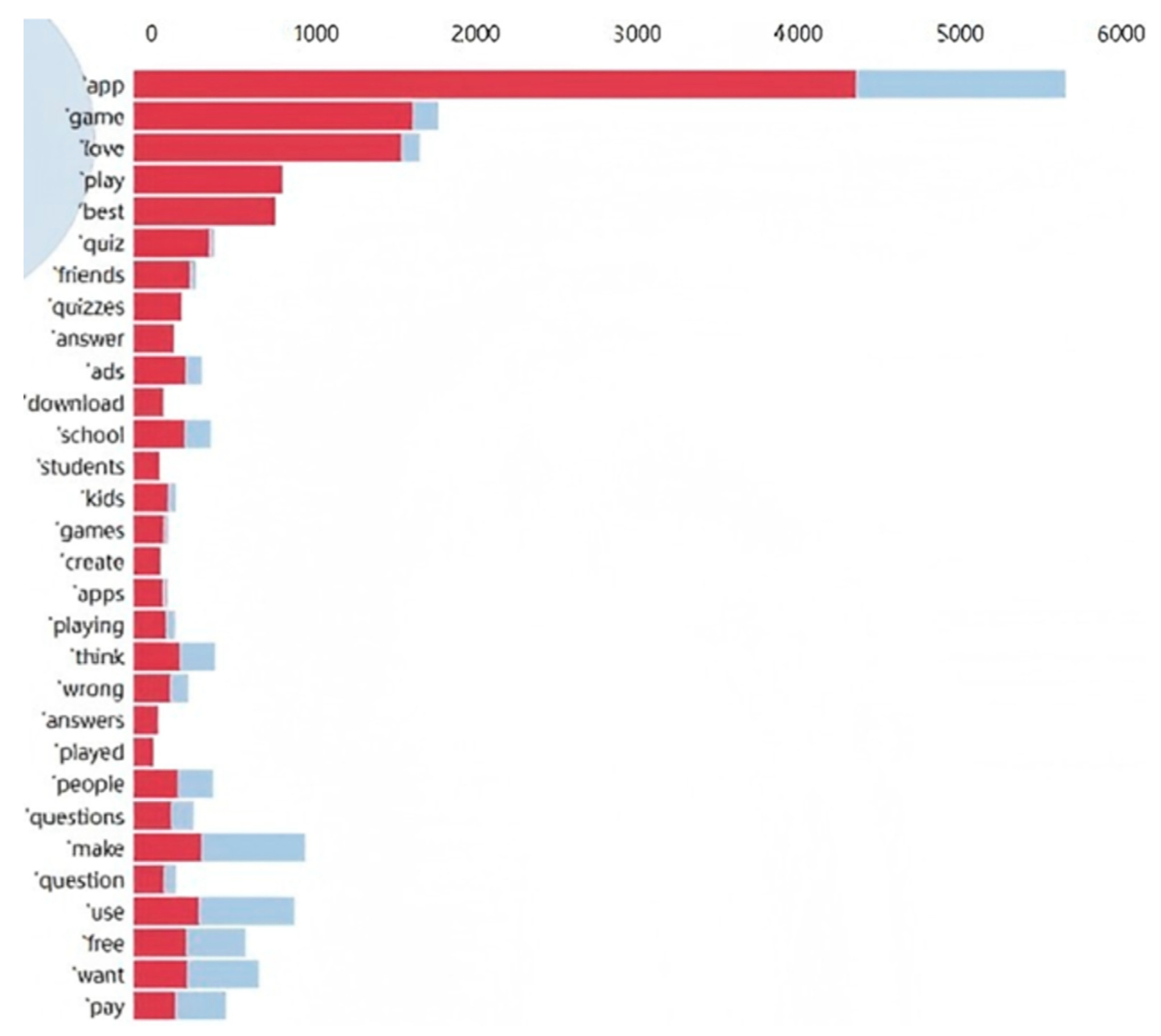


| Country | Time | Author | Comments |
|---|---|---|---|
| UK | 27 November 2024 | Santosh Khandare | This app is very good for learning English and many other languages. |
| USA | 20 September 2024 | AIRHORN99 | wow! so fun! so amazing! just great! |
| UK | 27 May 2023 | _Kid_Dragon_ | It gets hard |
| USA | 21 January 2022 | &@278gar | I love this game it really helps me |
| France | 22 February 2022 | Dilys6191616 | Awesome app |
| Num | Word | Frequency |
|---|---|---|
| 1 | fun | 2969 |
| 2 | love | 2314 |
| 3 | best | 1239 |
| 4 | easy | 1072 |
| 5 | help | 814 |
| 6 | free | 786 |
| 7 | better | 542 |
| 8 | recommend | 474 |
| 9 | hearts | 409 |
| 10 | friends | 369 |
| Num | Word | Frequency |
|---|---|---|
| 1 | app | 5972 |
| 2 | learn | 2917 |
| 3 | fun | 2750 |
| 4 | language | 2359 |
| 5 | love | 2122 |
| 6 | game | 1449 |
| 7 | best | 1153 |
| 8 | new | 1131 |
| 9 | languages | 1015 |
| 10 | easy | 1010 |
Disclaimer/Publisher’s Note: The statements, opinions and data contained in all publications are solely those of the individual author(s) and contributor(s) and not of MDPI and/or the editor(s). MDPI and/or the editor(s) disclaim responsibility for any injury to people or property resulting from any ideas, methods, instructions or products referred to in the content. |
© 2025 by the authors. Licensee MDPI, Basel, Switzerland. This article is an open access article distributed under the terms and conditions of the Creative Commons Attribution (CC BY) license (https://creativecommons.org/licenses/by/4.0/).
Share and Cite
Ding, L.; Zhang, H.; Zuo, T. The Detachment of Function and the Return to Essence: Exploring the Public’s Emotional Attitudes Towards Gamified Education. Educ. Sci. 2025, 15, 797. https://doi.org/10.3390/educsci15070797
Ding L, Zhang H, Zuo T. The Detachment of Function and the Return to Essence: Exploring the Public’s Emotional Attitudes Towards Gamified Education. Education Sciences. 2025; 15(7):797. https://doi.org/10.3390/educsci15070797
Chicago/Turabian StyleDing, Liwei, Hongfeng Zhang, and Tuxian Zuo. 2025. "The Detachment of Function and the Return to Essence: Exploring the Public’s Emotional Attitudes Towards Gamified Education" Education Sciences 15, no. 7: 797. https://doi.org/10.3390/educsci15070797
APA StyleDing, L., Zhang, H., & Zuo, T. (2025). The Detachment of Function and the Return to Essence: Exploring the Public’s Emotional Attitudes Towards Gamified Education. Education Sciences, 15(7), 797. https://doi.org/10.3390/educsci15070797







